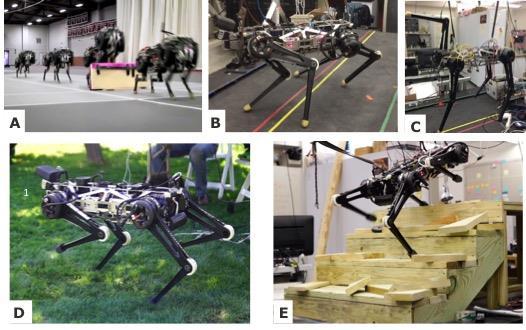
Ground mobility is one of the key challenges in future mobile robots. Mobile robots can provide physical services that will be scarce in rapidly aging society. However, the mobility of current robots is limited to flat ground and cannot match with human’s mobility even in structured man-made environments. As elucidated by the failed mobile robots in the disaster of Fukushima Daiichi power plant, the lack of versatile, all-terrain mobility is a critical bottleneck for robots performing in compromised area. Most of the conventional machines rely on wheels or tracks to interact with environment and cannot navigate nearly as well as humans with legs. In order to overcome the limited rough terrain mobility of today’s mobile robots, we are developing an advanced legged platform matching humans’ mobility in cluttered and geometrically complex environments often found in our environments. In this proposal, we will focus on developing navigation capability of the MIT Cheetah 3 robustly traversing diverse terrains found in and outside of typical house.
[June-1-2018 to current]
Publications:
- T. Dudzik, M. Chignoli, G. Bledt, B. W. T. Lim, A. Miller, D. Kim, and S. Kim, “Robust Autonomous Navigation of a Small-Scale Quadruped Robot in Real-World Environments,” in IROS 2020, 2020.
- D. Kim, D. Carballo, J. D. Carlo, B. Katz, G. Bledt, B. W. T. Lim, and S. Kim, “Vision Aided Dynamic Exploration of Unstructured Terrain with a Small-Scale Quadruped Robot,” in 2020 IEEE International Conference on Robotics and Automation (ICRA), 2020, doi: 10.1109/ICRA40945.2020.9196777 [Online]. Available: https://doi-org.ezproxy.canberra.edu.au/10.1109/ICRA40945.2020.9196777
Videos:


